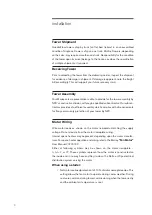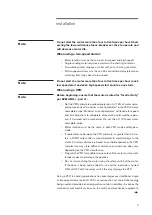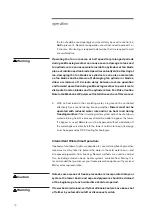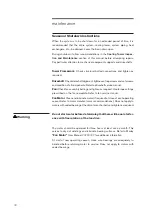
5
➠
Do not start the motor more than four to five times per hour. Short
cycling the tower will cause fuses, breakers or O.L.s to operate and
will decrease motor life.
When using a two-speed starter:
• Motor rotation must be the same at slow speed and high speed.
• Single winding motor requires a starter with a shorting contactor.
• Two-winding motor requires a starter with out a shorting contactor.
• All two-speed starters must have a 20 second time delay relay when
switching from high speed to low speed.
Do not start the motor more than four to five times per hour (each
low speed start and each high speed start count as one start).
When using a VFD:
Before beginning, ensure that the motor is rated for “Inverter Duty”
per NEMA MG-1, part 31.
• Set the VFD solid state overload protection to 119% of motor name-
plate amps and set “maximum current parameter” in the VFD to motor
nameplate amps. “Maximum current parameter” will reduce fan speed
and limit amp draw to nameplate amps during cold weather opera-
tion. If furnished with a mechanical O.L. set this at 110% over motor
nameplate amps.
• Motor rotation must be the same in both VFD mode and By-pass
mode.
• If cable distance between the VFD and motor is greater than 30 me-
ters a DV/DT output filter is recommended to avoid damage to the
motor. 30 meters distance is based on our field experience, the VFD
manufacture may state different distances and distance does vary
depending on the VFD manufacture.
• Program the VFD for variable torque output. Flux vector and constant
torque modes may damage the gearbox.
• Do not start and stop the motor using the safety switch at the motor.
If the drive is being commanded to run and the load side is cycled
ON and OFF with the safety switch this may damage the VFD.
Using a VFD in cooling applications has advantages over traditional single
or two speed motor control. A VFD can reduce the cost of electrical energy
being used and provide better temperature control. In addition, it reduces the
mechanical and electrical stress on the motor and mechanical equipment.
Note
Note
Note
installation






































